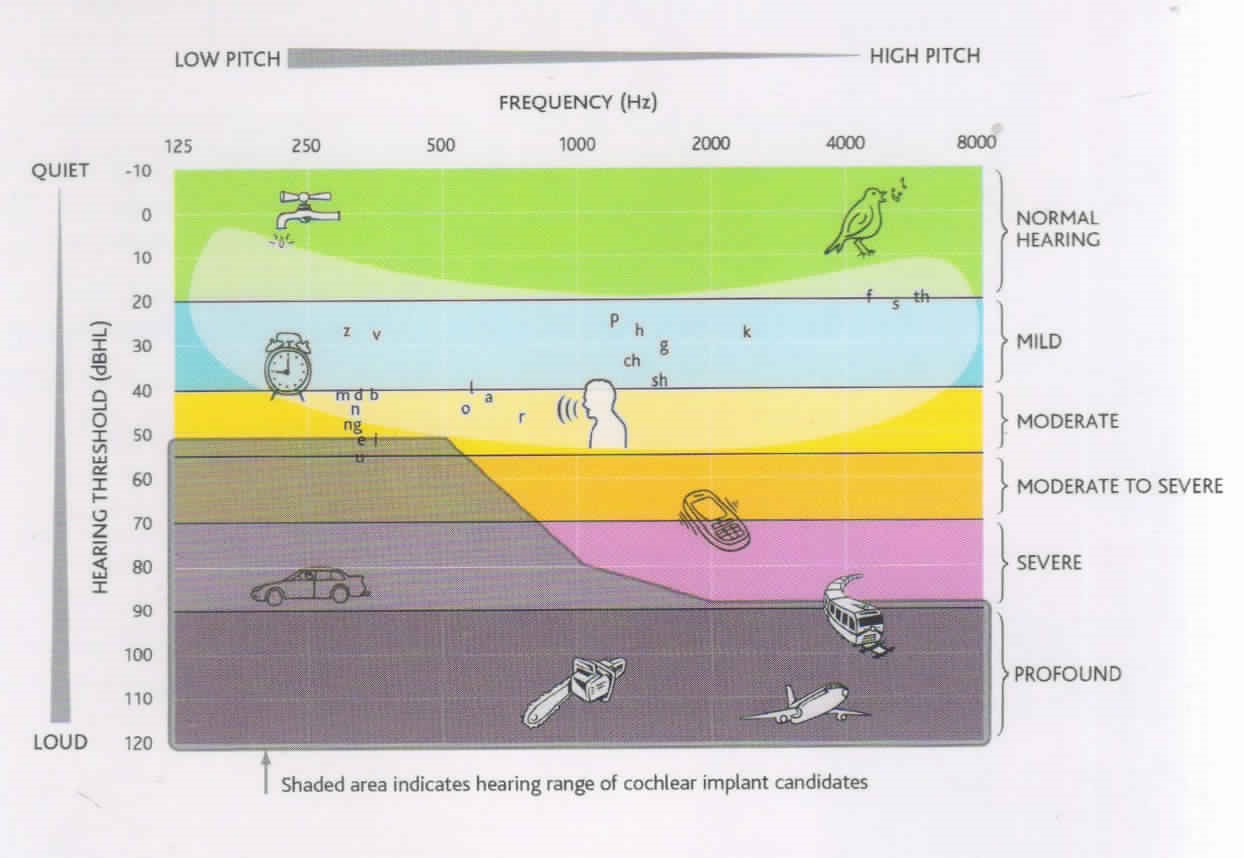OUTER
The outer ear consists of the pinna and the ear canal. The pinna is your external ear, which captures sound and funnels it into the ear canal.
INNER
The inner ear consists of a channels and chambers. For hearing, the important organ is the spiral shaped cochlea. Roughly the size of a pea, the cochlea contains fluid and about 15,000 tiny hair cells. Each hair cell is connected to the auditory nerve.
MIDDLE
The middle ear consists of the ear drum membrane and an air-filled cavity containing three small bones called ossicles. The individual ossicles are the hammer (malleus), anvil(incus) and stirrup (stapes)-and they vibrate together when the ear drum moves.
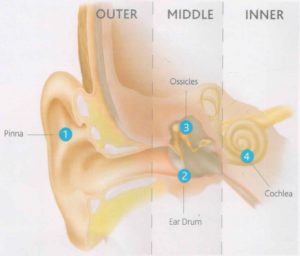
The ear is made up of three sections
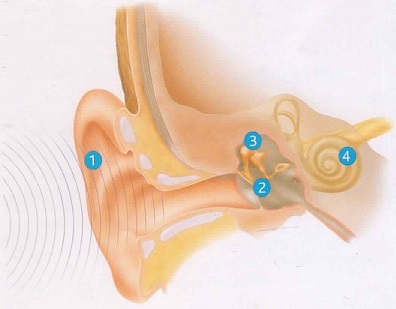
How do we hear?
The ear is an amazingly complex with efficient hearing system but the whole process only takes a fraction of a second in hearing loss.
- Sound waves are guided down your ear canal by the pinna.
- The sound waves hit your ear drum and it vibrates.
- The small ossicles vibrate with the ear drum, transferring the sound across the middle ear to the cochlea.
- The fluid inside the cochlea pick up the vibrations and carries them to the thousands of tiny hair cell. These hair cells change the movement into electrical impulses which are sent along the auditory nerve to the brain. The hearing centre of the brain interprets the impulses as sound.
Three Different Types of Hearing Loss
Sensorineural Hearing Loss
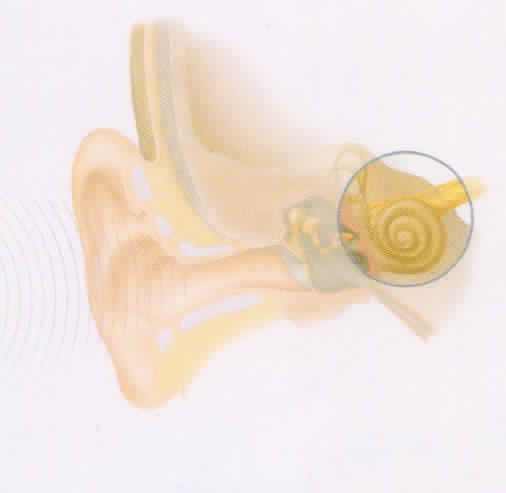
Sensorineural hearing loss is often called ‘nerve deafness’. It’s caused by damage to the cochlea, or the nerve pathways between the cochlea and the brain. Sensorineural hearing loss can be mild, moderate, severe, or profound. It can affect one or both ears, and is usually permanent.
Mild-to-moderately severe sensorineural hearing loss can usually be helped with hearing aids or a middle ear implant moderately severe to profound hearing loss can usually be helped with a cochlear implant.
Sensorineural hearing loss can be caused by:
- Inherited hearing loss
- Ageing (prebycusis)
- Viral infections such as rubella, measles, mumps and cytomegalovirus
- Drugs which damage the hearing system
- Birth trauma
- Complications from premature birth
- Trauma (usually long term exposure to extremely loud noise, commonly called industrial deafness)
Conductive Hearing Loss

Conductive hearing loss occurs when there is a problem with the outer or middle ear. This means that sound is unable to travel or ‘conduct’ from the outer ear to the eardrum and the tiny bones, or ossicles, of the middle ear. A conductive hearing loss may occur in both ears and just one and can often be helped by medical or surgical treatment.
Conductive hearing loss can be caused by:
- Congenital
- Excess wax or a foreign object in the ear canal
- Outer ear infection
- Chronic ‘glue ear’ or middle ear infection, called otits media
A hole in the eardrum (perforation)
Mixed Hearing Loss
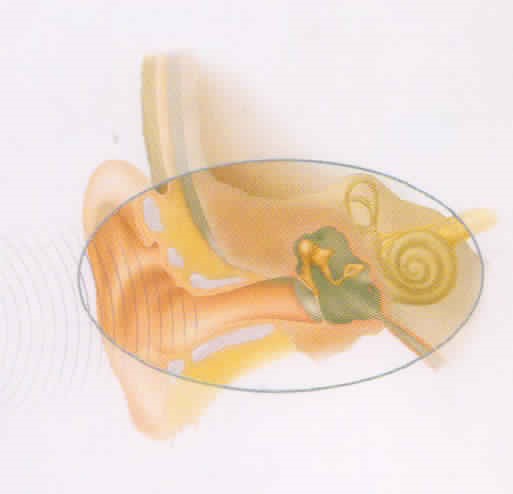
Mixed hearing loss combines problems with the conductive pathway (outer and middle ear) and the cochlea or auditory nerve (the inner ear). Mixed hearing loss can occur in both ears, and just one.
As part of the hearing tests done for you or your child, you’ll be given an audiogram, which shows the hearing profiles for the left and right ears. The audiogram plots the usable hearing and hearing loss for each ear. Your audiologist will test sounds one frequency at a time and plot the softest level
At which the frequency can be heard. The closer the marks are to the top of the graph, the quieter the sound that can be heard in that frequency band. The most important pitches for speech fall into the lightly shaded area, which we call the ‘speech banana’.
YOU’RE NOT ALONE – Hundreds of millions of people around the world experience some form of hearing loss. While many can be helped by a hearing aid, more than 75 million people still find the most powerful hearing aids inadequate.
The Air and Bone Conduction Tests
It’s important to check both the air and bone conduction of both ears, to see which part of the hearing system isn’t working properly.
# The Air Conduction Test
Checks the natural hearing pathway, where sound travels through the air into the outer and middle ear to reach the cochlea.
# The Bone Conduction Test
Checks the function of the cochlea. A metal band with an attachment called a bone oscillator is placed against the bone behind the ear. Sounds are sent directly to the cochlea through the bone bypassing the outer and middle ear to test the function of the cochlea.
